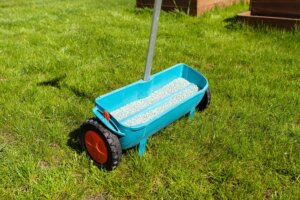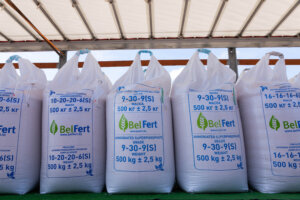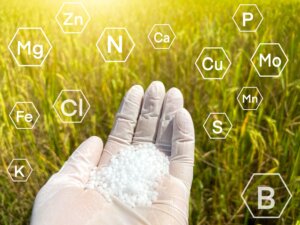A lush, green lawn doesn’t happen by chance; it starts with the right fertilizer. From nutrient balance to soil type, here’s how to choose the best lawn fertilizer to keep your grass thriving all year long.
Key Takeaways:
- The right lawn fertilizer gives your grass essential N-P-K nutrients for strong roots, a lush green color, and year-long resilience.
- Soil testing (recommended every 3–4 years by Penn State Extension) helps identify nutrient and pH imbalances before fertilizing.
- Liquid fertilizers deliver fast results; granular types provide slow, steady feeding with less frequent applications.
- Organic options like compost or biochar build soil health naturally, while synthetic blends offer quick, visible green-up.
- Fertilize in spring and fall, water afterward, and try fertilizer spikes for easy, even feeding.
Why Choosing the Right Lawn Fertilizer Matters
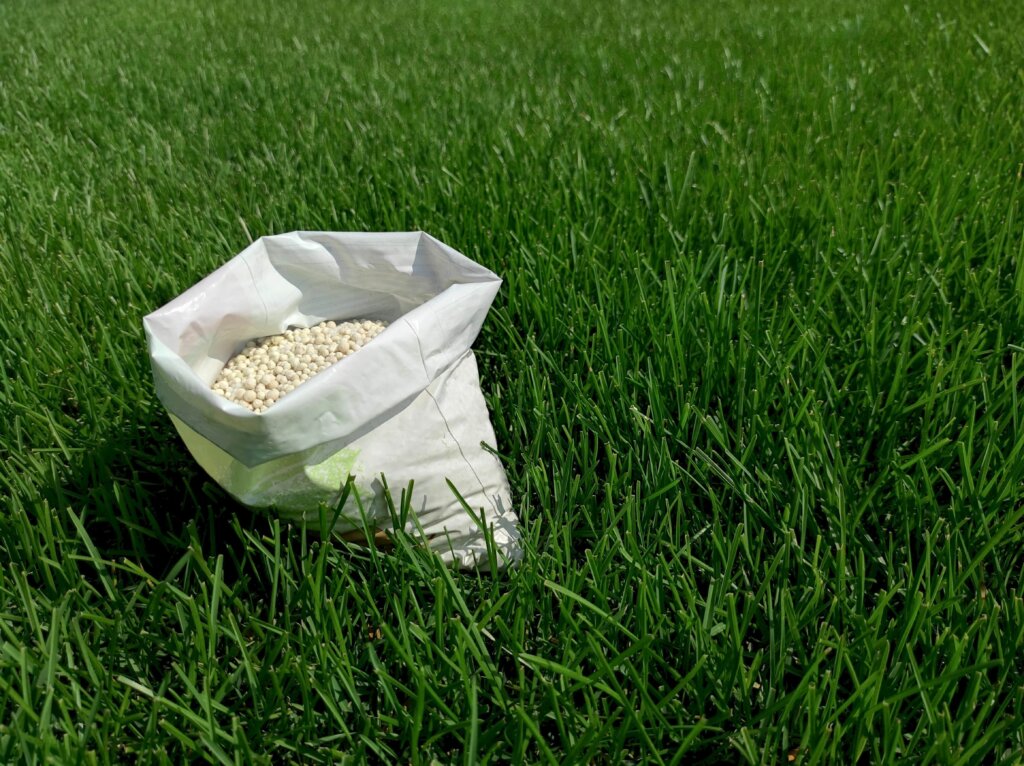
A beautiful lawn doesn’t happen by luck; it’s the result of proper nutrition, timing, and care. The right lawn fertilizer provides the essential nutrients your turf needs to stay lush, green, and resilient throughout the growing season.
A balanced mix of nitrogen, phosphorus, and potassium (N-P-K) strengthens root development, improves soil health, and helps grass resist weeds, pests, and drought.
For Pennsylvania homeowners, professional lawn fertilization services ensure your yard thrives in local soil and weather conditions, from spring green-up to fall recovery.
The Importance of Soil Testing Before Fertilizing
Before applying any fertilizer, start with a soil test. According to Penn State Extension, turf-soil samples should be taken from lawns about 3-4 inches deep, and clay-textured soils should be tested every 3-4 years because of slower nutrient release and lower aeration. This test identifies your soil’s pH and nutrient deficiencies so you can choose the right fertilizer mix for your specific needs.
For example, clay-heavy Pennsylvania soils often require more nitrogen and organic matter to improve aeration and root growth. You can have your soil tested through local garden centers or cooperative extensions to find your ideal N-P-K ratio.
Understanding the N-P-K Ratio in Lawn Fertilizers
Every bag of fertilizer lists three key numbers: for example, 16-4-8. These represent the N-P-K ratio:
- Nitrogen (N): Promotes a deep green color and strong leaf growth.
- Phosphorus (P): Boosts root development and helps new grass seed establish.
- Potassium (K): Increases disease resistance and strengthens turf against stress.
Selecting the right balance ensures your lawn gets all the nutrients it needs to stay vibrant. Learn more about Types of Fertilizers and which blends perform best for your yard conditions.
Liquid vs. Granular Fertilizer: Which is Better?
Both liquid fertilizers and granular fertilizers offer benefits depending on your goals and lawn type. If you’ve ever wondered: Is liquid fertilizer better than granular? The answer often depends on how quickly you want results and how much control you prefer over the application.
| Type | Pros | Cons |
|---|---|---|
| Liquid Fertilizer | Quick absorption, easy to apply, provides fast results. Ideal for early spring feeding. | Requires frequent applications, higher risk of leaching. |
| Granular Fertilizer | Slow-release nutrients, long-lasting results, and more control over coverage. | Takes longer to show visible results. |
For many Pennsylvania homeowners, granular fertilizer works best for steady, consistent growth across different soil types. However, if you’re looking for a rapid boost during the growing season, you can also explore liquid fertilizer options or hybrid approaches that combine both methods.
Learn more about how Liquid Lawn Fertilizer delivers quick, even nutrient absorption for a visibly greener lawn.
Organic Lawn Fertilizer vs. Synthetic: What’s Best for You?
Choosing between organic lawn fertilizer and synthetic fertilizer depends on your lawn’s long-term health goals and how quickly you want results. Both types can help your grass thrive, but they work in different ways.
Organic Lawn Fertilizers
Derived from natural materials like compost, bone meal, fish emulsion, or biochar, these products enrich your soil with organic matter, micronutrients, and secondary nutrients such as zinc, iron, manganese, and boron.
- Eco-friendly and sustainable: Improves soil life and supports a healthy ecosystem for grass and garden plants.
- Long-lasting: Releases nutrients slowly, providing steady feeding with less frequent applications.
- Improves soil structure: Builds a strong foundation for turf, sod, or new lawn seeds to root deeply.
While organic fertilizers take longer to show visible green-up, they promote year-long soil health and resilience against temperature swings. Learn how a Slow-Release Fertilizer supports turf health through all seasons.
Synthetic Fertilizers
Synthetic grass fertilizers are formulated for quick absorption and visible results. They deliver essential nutrients immediately, helping your lawn regain a rich green color after stress.
- Fast results: Ideal when your bermuda or centipede turf looks dull.
- Precise control: Lets you select the exact nutrient mix—like higher nitrogen for lush growth or balanced ratios for maintenance.
- Budget-friendly: A cost-effective option for larger yards and gardens.
However, synthetic fertilizers can cause burn if overapplied and may require more frequent applications to maintain results. For sustainable balance, many Pennsylvania homeowners combine organic matter with synthetic products for long-term strength and immediate impact.
To learn more about quick-acting blends, explore how Fast-Release Fertilizer can boost your lawn’s green-up during the growing season.
5 Steps: How to Apply Your Chosen Lawn Fertilizer Correctly
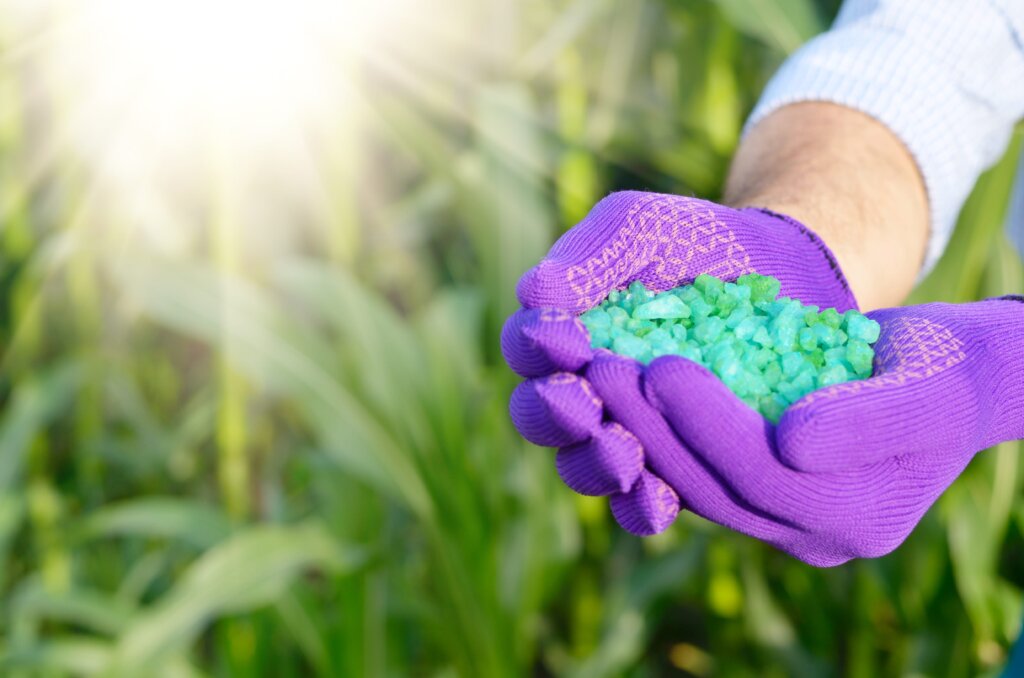
Once you’ve selected the right lawn fertilizer, proper application ensures you get the most out of it. Here’s how to do it effectively:
- Fertilize during the right season: In Pennsylvania, feed your lawn in spring and fall for the best results.
- Water after application: This helps nutrients reach the roots and prevents fertilizer burn.
- Follow coverage guidelines: Most fertilizers cover a specific area in sq ft, so measure your yard before applying.
- Identify your grass type: Cool-season varieties such as Kentucky Bluegrass and fescue require different fertilization schedules than warm-season types like Bermuda.
- Watch for signs: Yellowing or patchy grass indicates your lawn needs more nutrients.
For a deeper guide, read our expert tips on Slow-Release Liquid Fertilizer and how to get uniform, healthy growth.
Choosing the Right Fertilizer for Each Season
Timing matters just as much as the type of fertilizer you choose.
Spring
Use nitrogen-rich fertilizer to boost green color after winter dormancy.
Summer
Apply balanced fertilizer with potassium to improve drought tolerance.
Fall
Strengthen roots before winter with a slow-release blend.
Winter
Avoid fertilizing frozen soil to prevent runoff and nutrient loss.
For added convenience and even nutrient distribution, consider using fertilizer spikes, a simple way to feed your lawn’s roots effectively throughout the year.
Keep Your Pennsylvania Lawn Green Year-Round
Selecting the right lawn fertilizer is both science and art, and Terra Lawn Care is here to help. With over 50 years of combined experience and a 95% customer retention rate, our licensed technicians understand how to make lawns across the Tri-State area thrive.
Whether you’re nurturing a new lawn, maintaining turf through seasonal changes, or tackling persistent weeds, our team tailors fertilization plans to your specific needs.
Ready for a Lawn Transformation?
Contact us today to schedule your next lawn care visit. Your dream of a green, beautiful lawn starts with the right fertilizer and the right team behind it.
Frequently Asked Questions About Lawn Fertilizers
The best lawn fertilizer depends on your soil condition, grass type, and season. In Pennsylvania, a balanced mix with moderate nitrogen and potassium is ideal for cool-season grasses.
Yes. September feeding helps lawns recover from summer drought and prepare for the cooler months. Use a slow-release fertilizer for longer-lasting results.
If your lawn looks pale, thin, or patchy, it likely lacks essential nutrients. A simple soil test can confirm deficiencies in nitrogen, phosphorus, or potassium.

